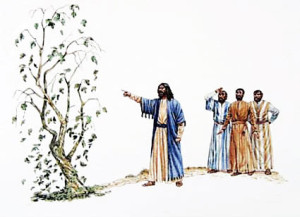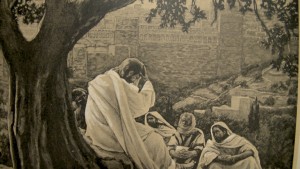Monday through Wednesday, Holy Week
We all know what happened on Palm Sunday. We also know that Jesus instituted the Lord’s Supper the evening of Maundy Thursday. On Good Friday we know he was crucified, that on Holy Saturday he lay in the grave and that he rose back to life on Easter Sunday. But what happened on Monday through Wednesday of Holy Week? That question is not so easy for us to answer. This is so even though the events consume many chapters of the Gospels (Matthew 21:18-26:16; Mark 11:12-14:11; Luke 19:47-22:6; John 12:20-50).
Luke sums up the activity of Jesus very nicely. “And he was teaching daily in the temple” (Luke 19:47). You actually know many of the parables and other teaching that Jesus gave on these three days, you just probably don’t realize that they occurred during the final week of his life. Such things like the story of the Widow’s Mite and the confrontation between Jesus and the Jewish leaders where he taught we should “render unto Caesar the things that are Caesar’s and unto God the things that are God’s,” are well known.

During this time we have only one miracle of Jesus recorded; the cursing of a fig tree that subsequently withered (Matthew 21:18-22; Mark 11:12-4, 20-25). (Obviously I’m not counting the Lord’s Supper, which is really a miracle but not an obvious one like healing someone.)
For those who work on such things, the recorded activity of Jesus is typically considered to have transpired on either Monday or Tuesday. Wednesday is sometimes called “silent.” Perhaps Jesus spent the day by himself preparing for the ordeal ahead. I’m of the opinion that the words in Luke 19:47 (quoted above) answer the question nicely. For those who wonder what he actually taught on Wednesday, I’d point to what he taught on Monday and Tuesday. Ask any teacher and they will tell you that they repeat information often. This would be even truer in a day and age when there were no newspapers, magazines, radios, television, recording devices, internet, and on and on. (This is why we have two different accounts of Jesus teaching the Lord’s Prayer (Matthew 6:9-13; Luke 11:2-4). Jesus certainly taught this prayer many more times than the two we have recorded.)

Perhaps the best way to get a good handle on what happened on these days is to read a good “harmony of the Gospels.” A harmony of the Gospels is an effort to blend all four Gospels into one continuous story. It is a bit trickier than one might imagine. The first person I know of to make such an effort was named Tatian (born around 120 and died around 185). He became a Christian sometime around 150 and learned the faith from Justin Martyr. Tatian remained orthodox until after the death of Justin (165). In later life he became a Gnostic (Gnosticism had almost as many forms as it had teachers and they were all heretical systems that were influenced by Christian, Jewish and eastern thought).
Tatian’s harmony was called the Diatessaron (in Greek it means “through the four”). You can read a translation of it at http://www.earlychristianwritings.com/text/diatessaron.html.
The Diatessaron was, at first, very popular and often read in worship services. For various reasons it dropped out of popular use. Many dislike such harmonies because you tend to lose the distinctiveness of the individual Gospels. While this is true, nonetheless they are a great way to get the big picture, like what was happening Monday through Wednesday during Holy Week.
Today there is any number of harmonies on the market. My favorite was produced by William F. Beck under the title THE CHRIST OF THE GOSPELS: The life and work of JESUS as told by Matthew, Mark, Luke, and John. It was published by Concordia Publishing House back in the late 50s. One reason I like it is that Beck uses the AAT translation of the Bible, which is a good “modern” language translation. If you want an harmony of the Gospels, this is the one I’d recommend and you can probably pick up a used copy on ABEbooks.com real cheap.
Blessings in Christ,
Pastor Rickert
